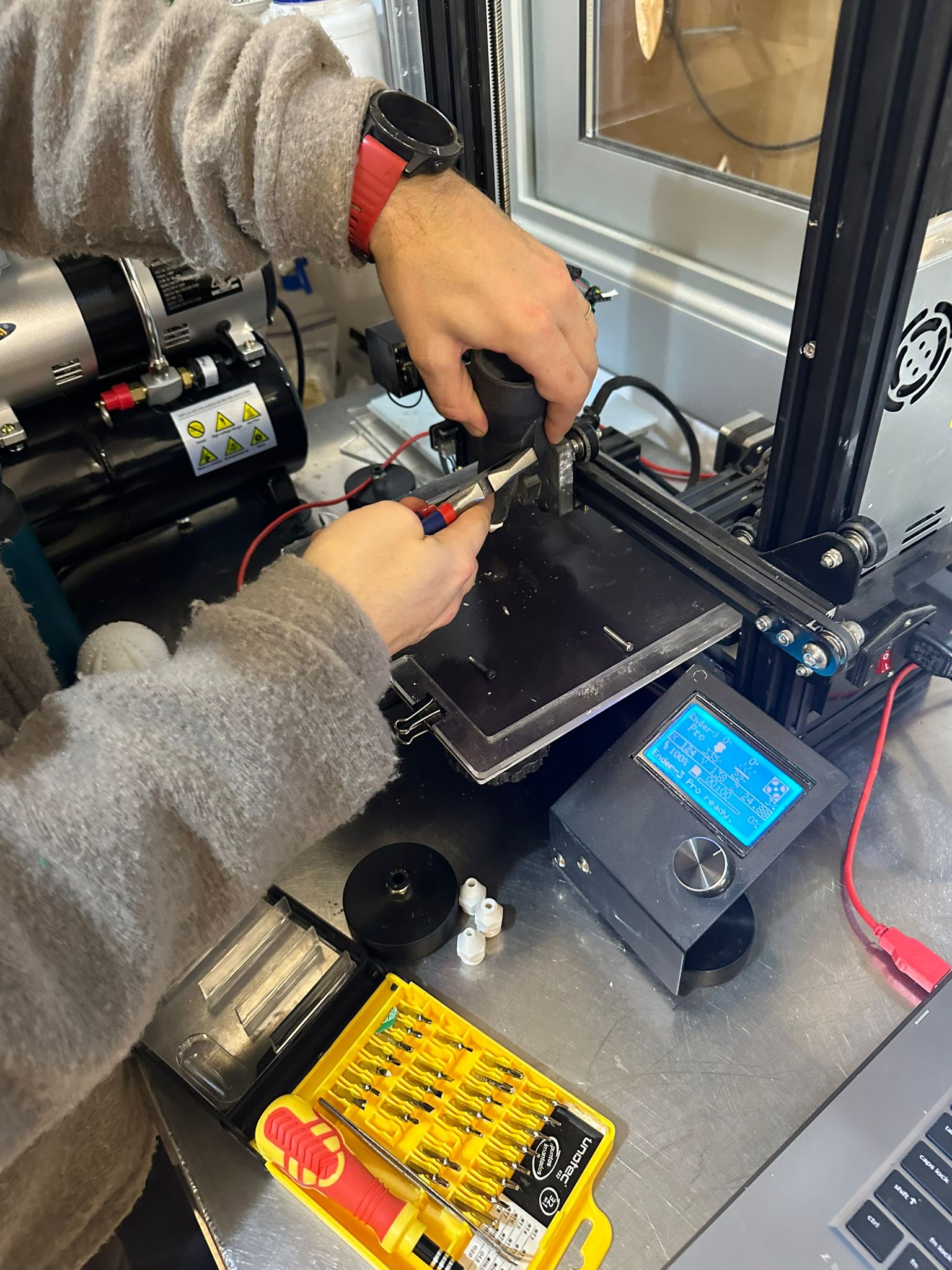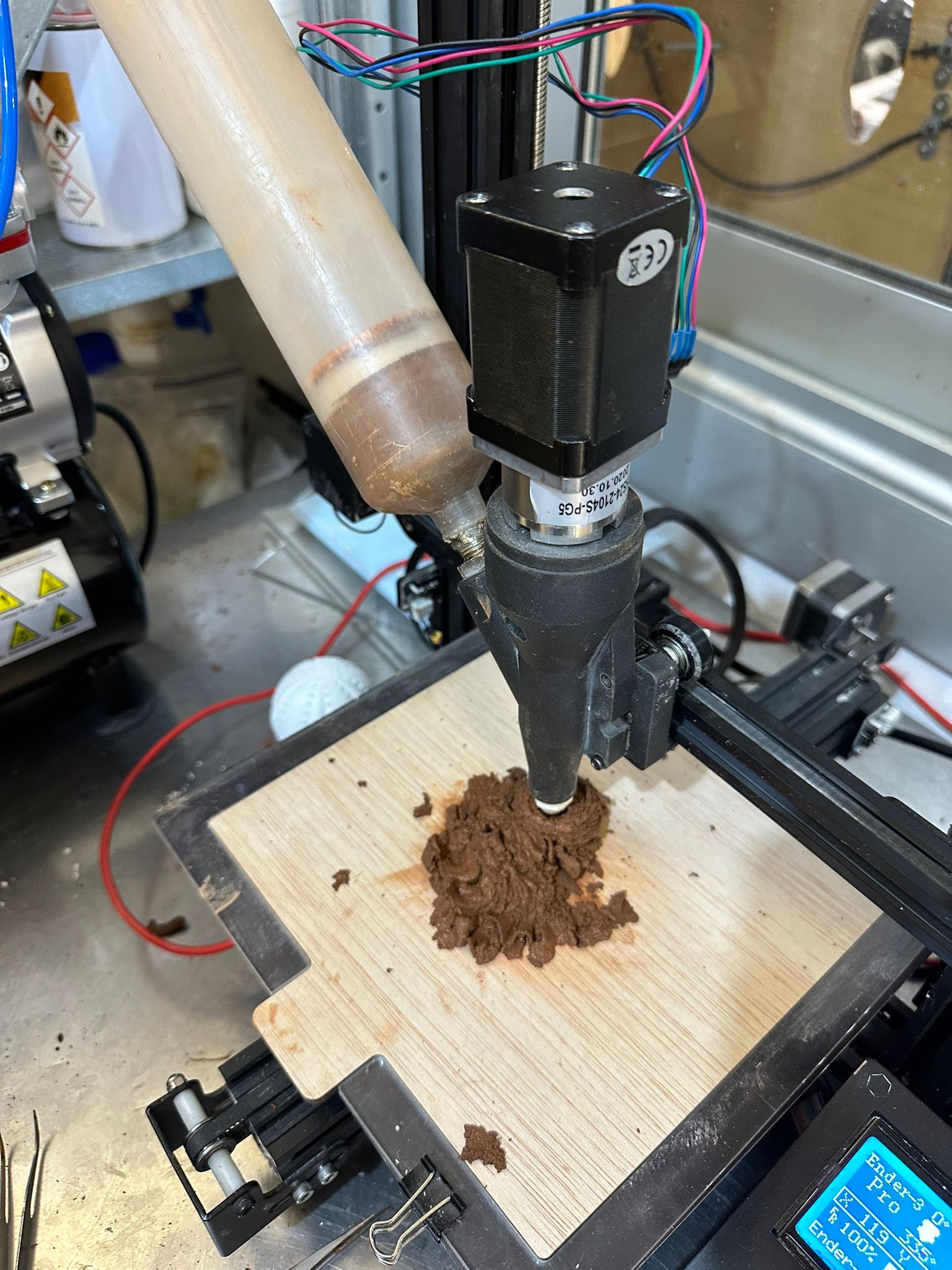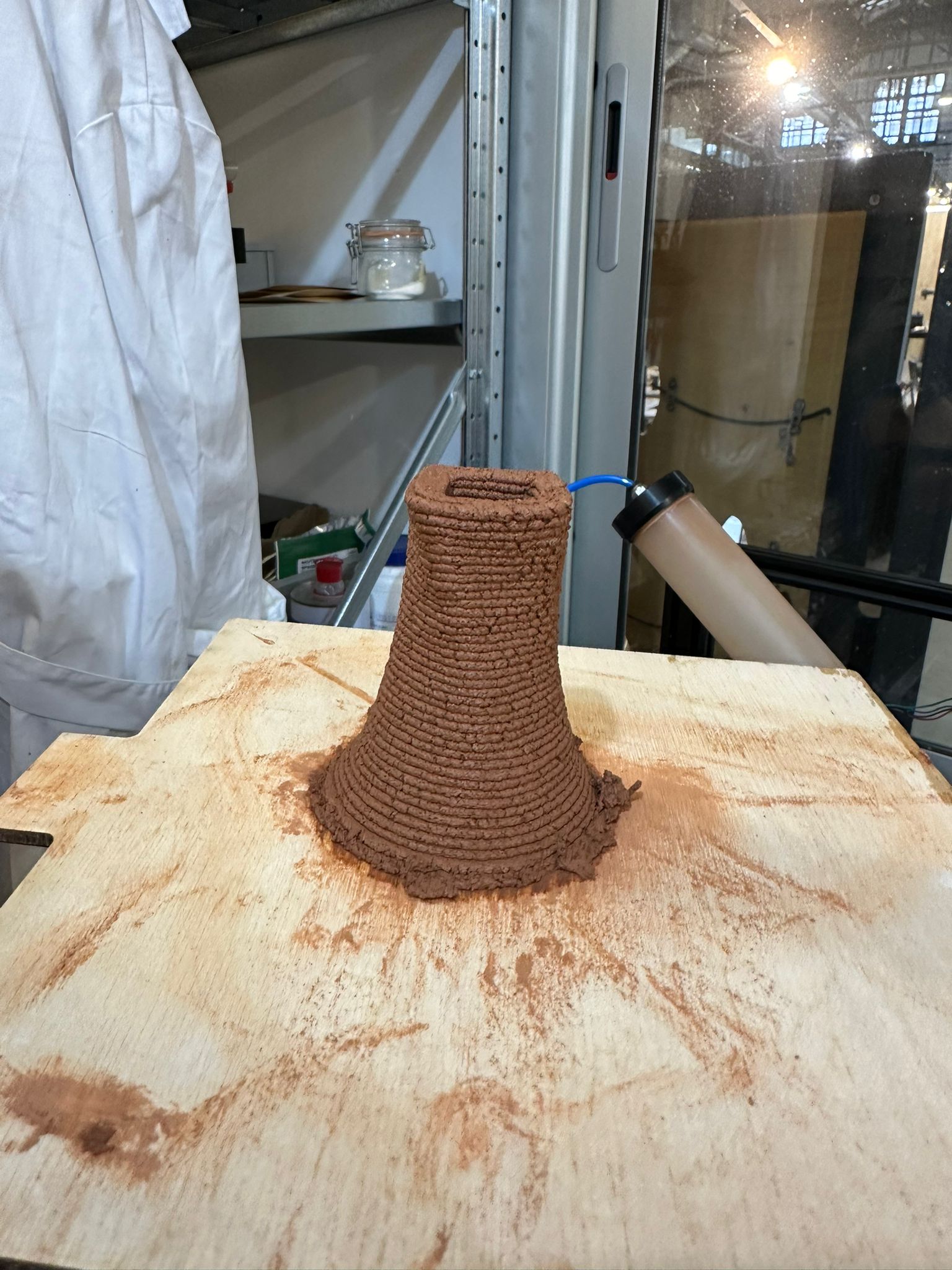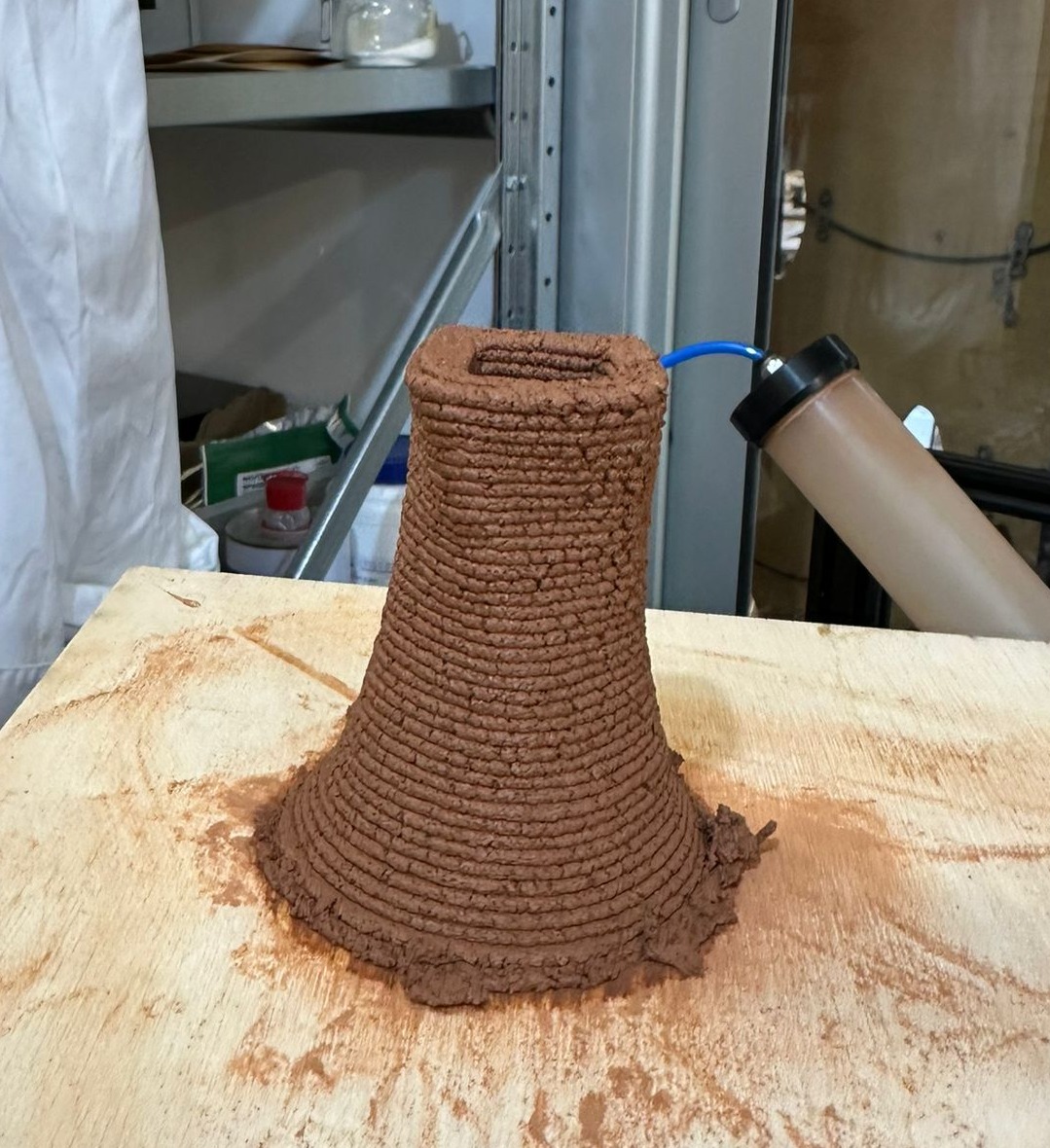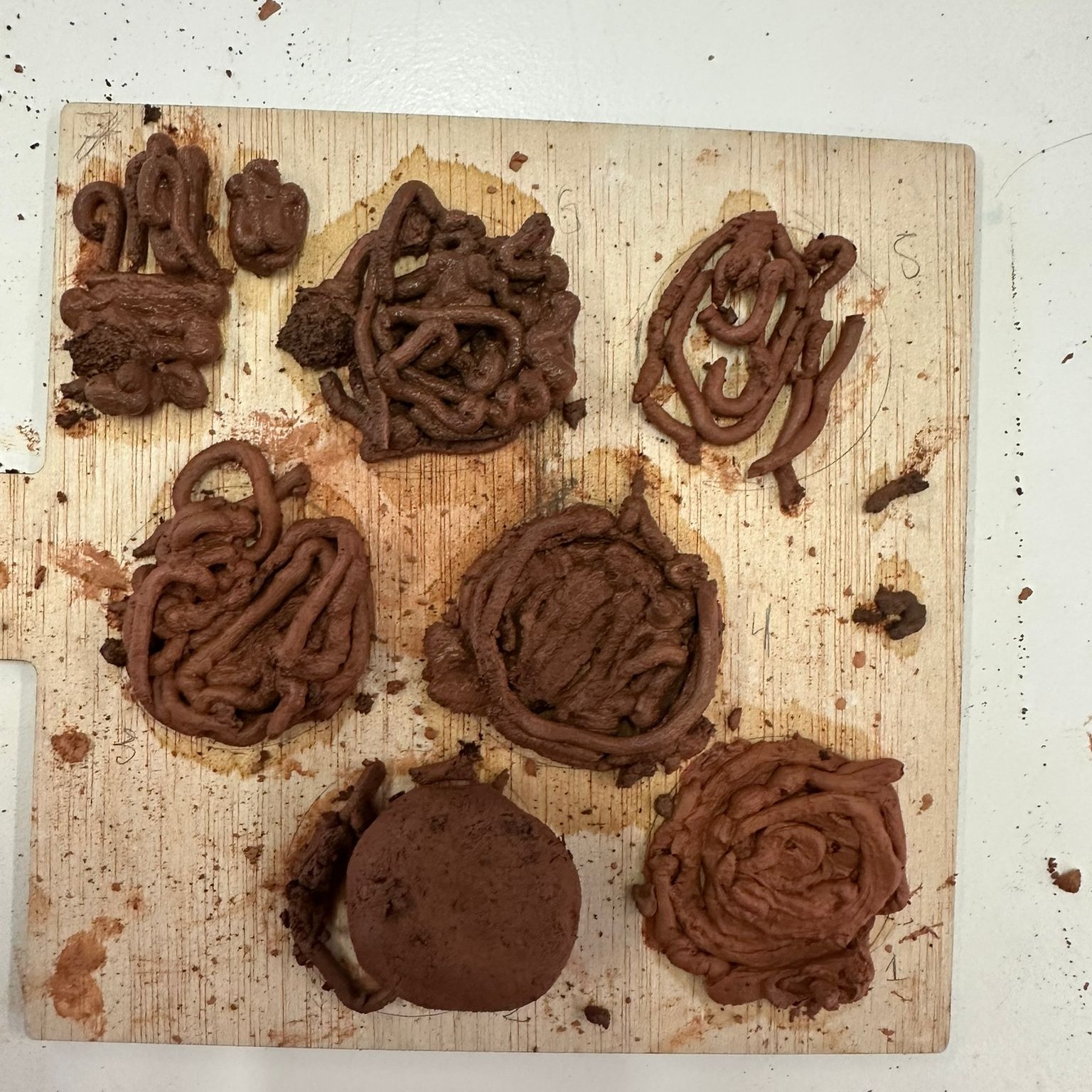
First Material Tests
We went back and forth about the ways we could use coffee grounds but in the end decided to combine it with clay as that could be a food safe option was fired and glazed. The first thing we tackled was understanding different ratios of clay, coffee and water and testing with a syringe to see how these ratios would perform. After coming in a few days later we noticed that there were two potential favorites to use. The others were either too grainy, too dry or too watery. These all led to crumbly products one dry or once that didn't extrude well.

